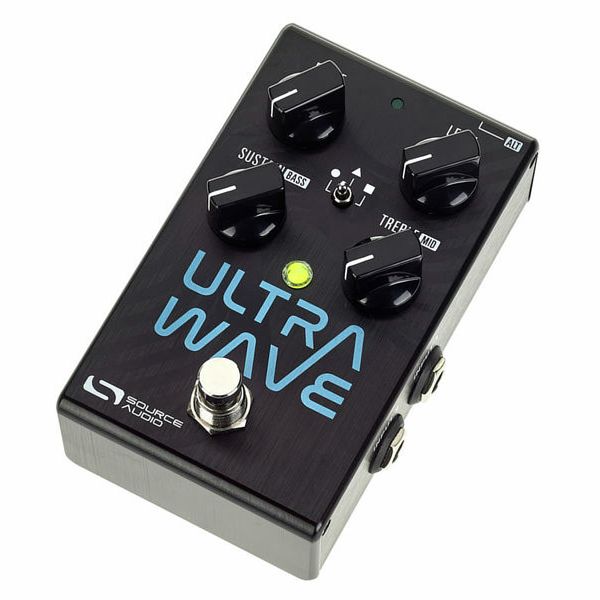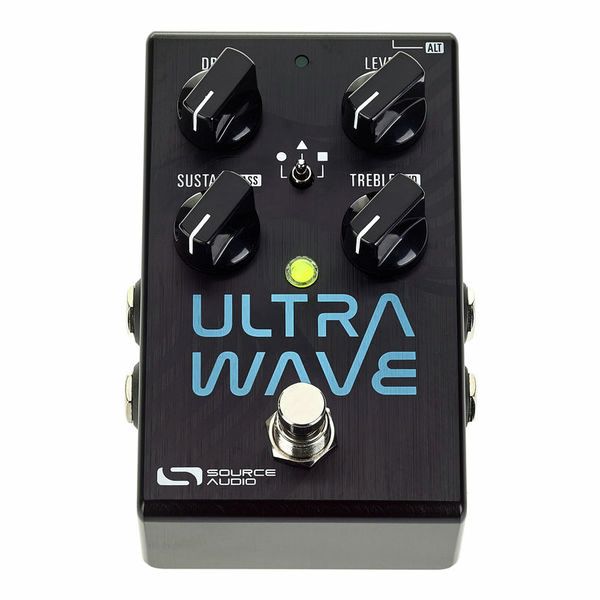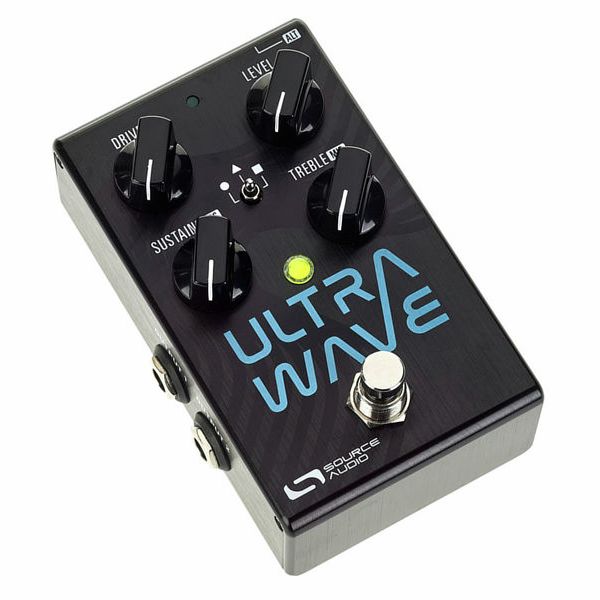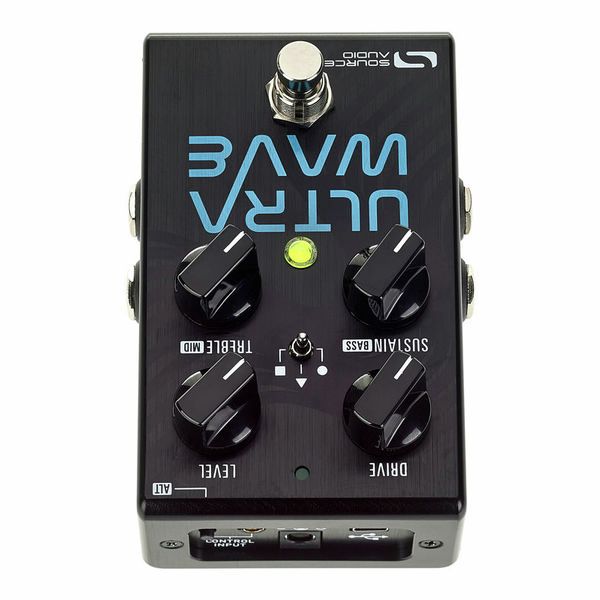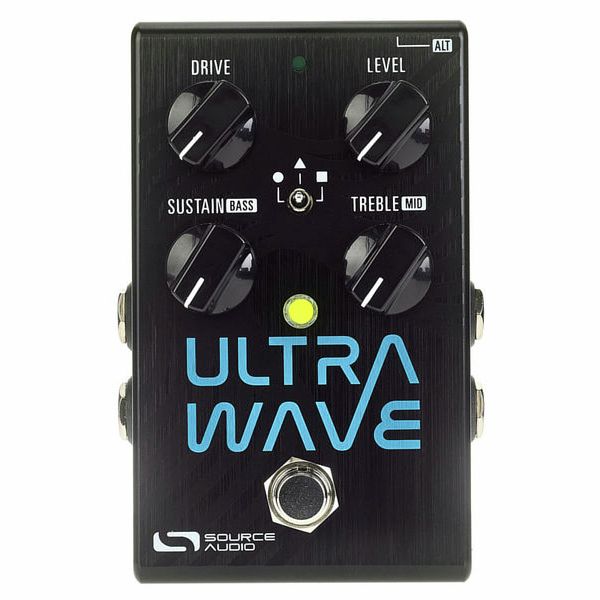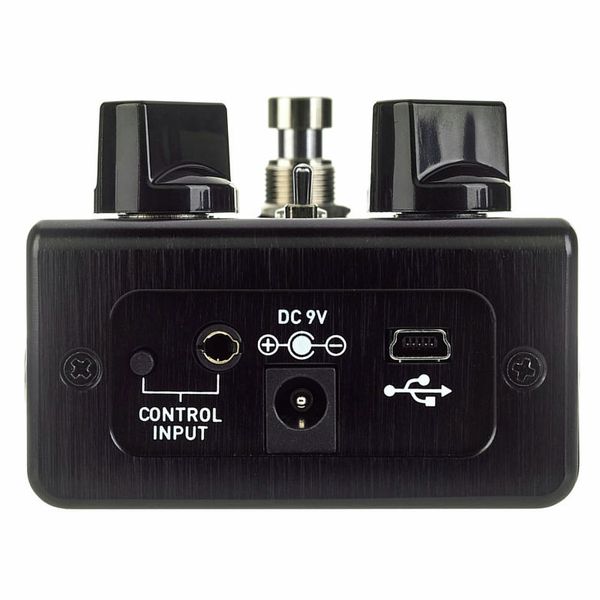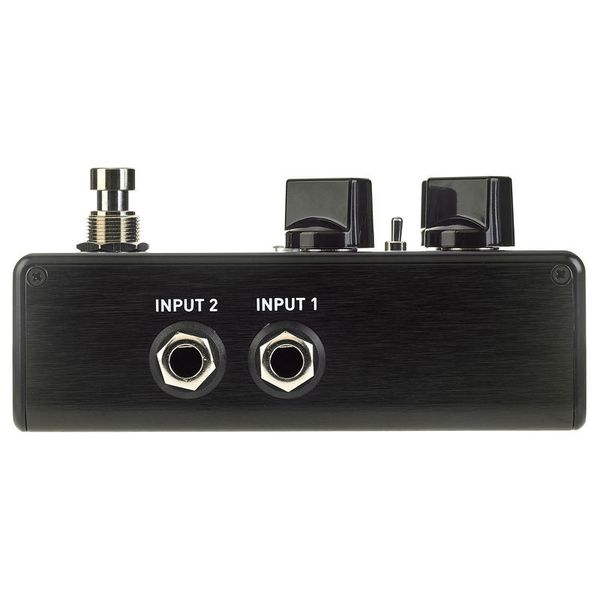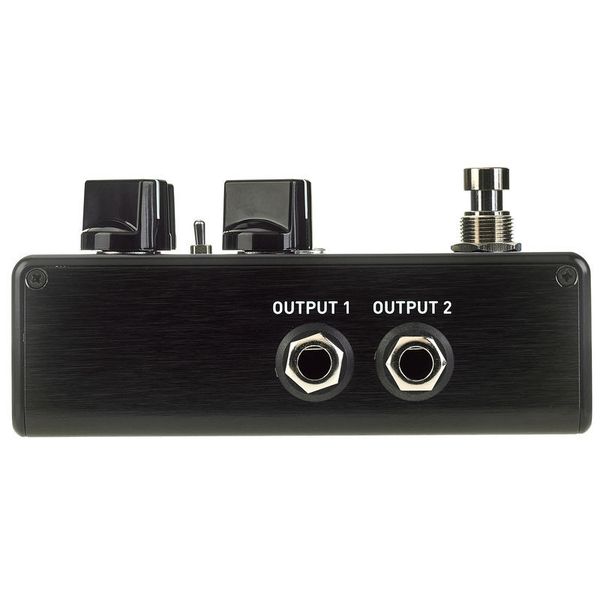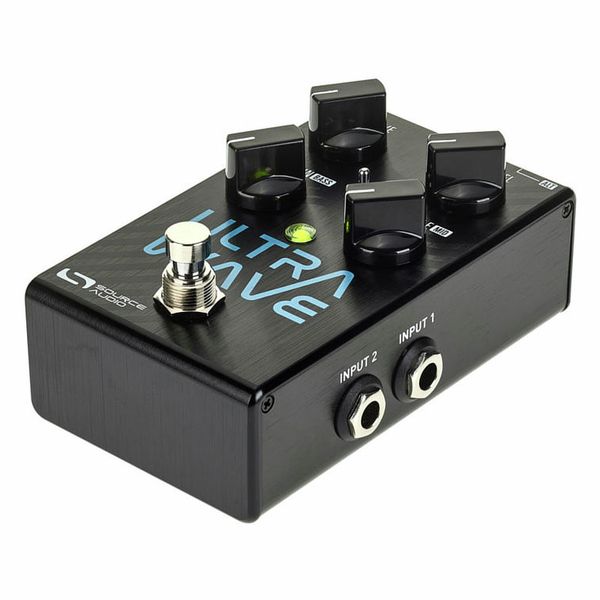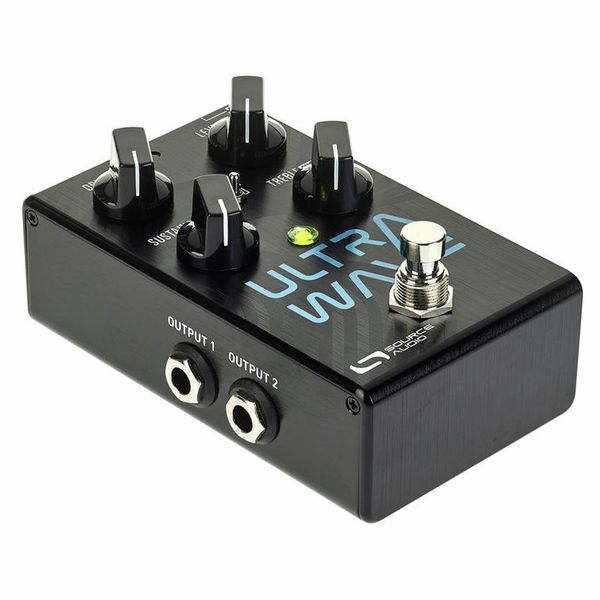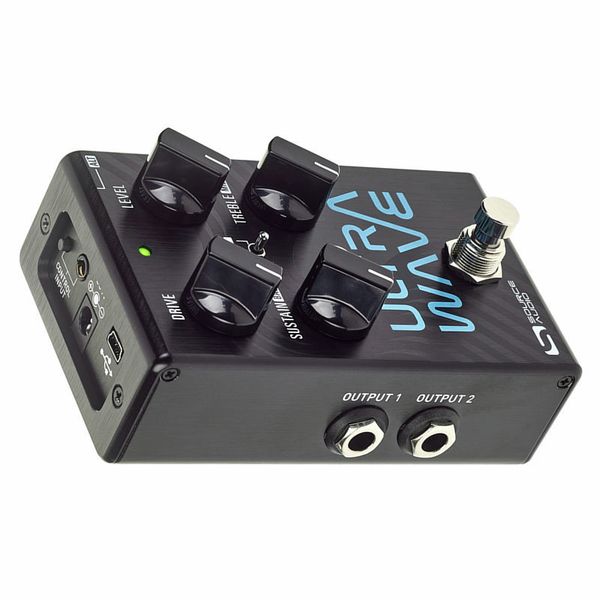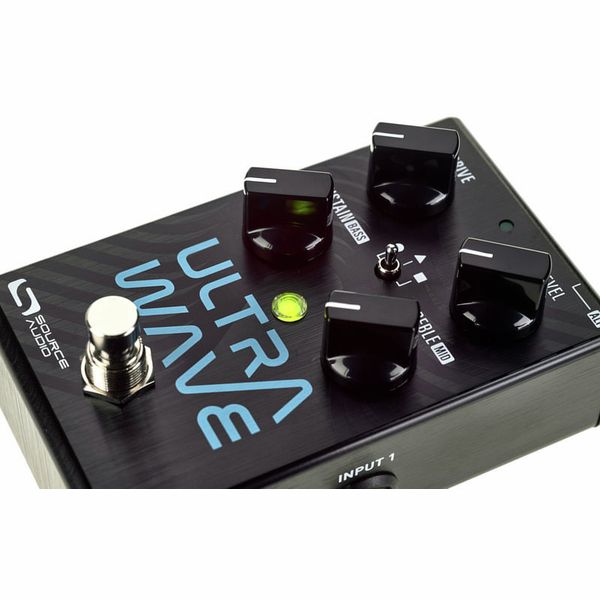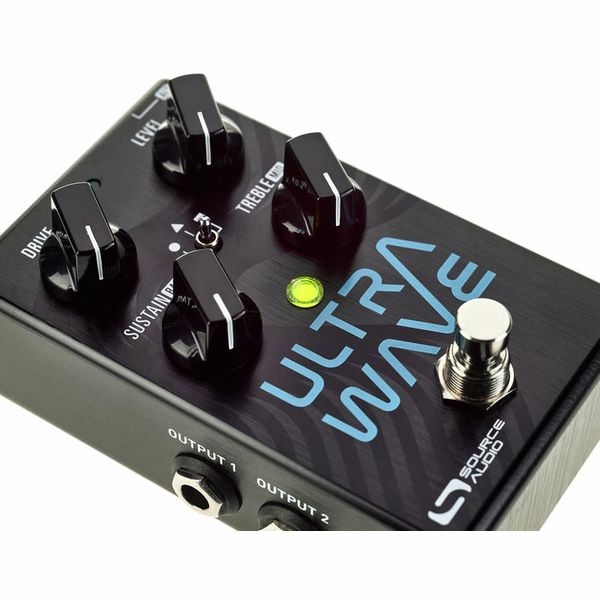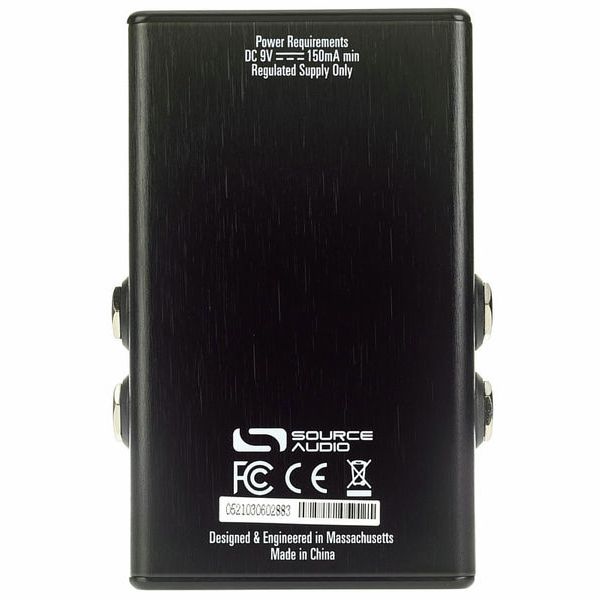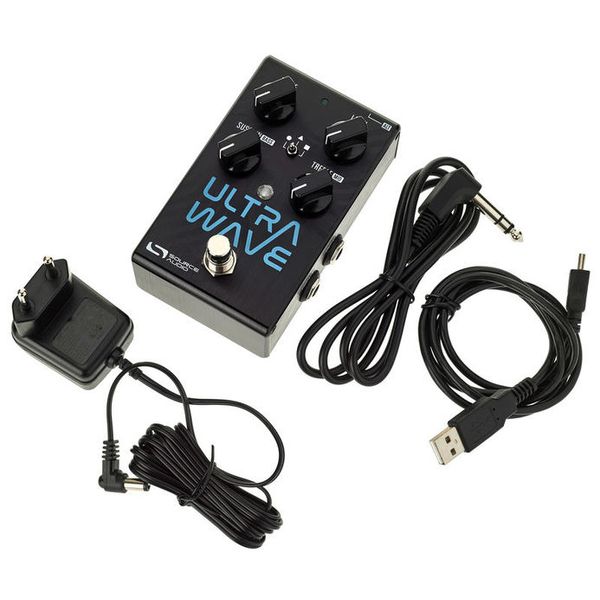Multiband distortion is splitting incoming (guitar) signal into up to 10 bands, distorting them separately and than recombining them again.
Ultrawave does that, and much more.
1. Input EQ, Bass, Middle, Treble, all with adjustable frequencies.
2. Compressor with all possible parameters adjustable. Compressor can be before or after distortion.
3. Single-band and multiband distorttion options (up to 10 bands). This is important, you can use single-band for more traditional sounds, that do include intermodulation distortion, that most of us are acustomed to. E.g. with 2 bands you can produce extremely boutique- drive tones by playing with where you split the signal in frequency, and how much and which frequency band you distort.
3a. distortion type can be changed for many different flavors, from traditional soft clipping (e.g. Tube Screamer or BluesBreaker), hard-clipping (e.g. DS-1, Distortion +), Octave generator (e.g. Octavia) to foldover distortions that have sound on their own that has to be heard.
4. Multiband tremolo, modulates volume for every distorted band. It can be very outwordly, but also very traditional (think harmonic tremolo)
4. Graphic EQ.
5. Shelving EQ, Low-Pass and High-Pass with adjustable frequency. Extremely powerfull to preciselly cut the fizz out.
6. Traditional single-band tremolo.
7. Full stereo! Two ins, two outs. You get essentially two pedals in one package. You can use them in any way possible, change routing withing the pedal or outside. Think about options for gain stacking. It is like hyper-mega KOT.
I was concerned that being such a digital pedal, it would be very, well-digital sounding. In deed, one can make it sound so, but it can sound like best boutique pedal too.
Maybe only complaint for all that flexibility is that it is not your typical drive pedal. It is not trivial to dial in.


